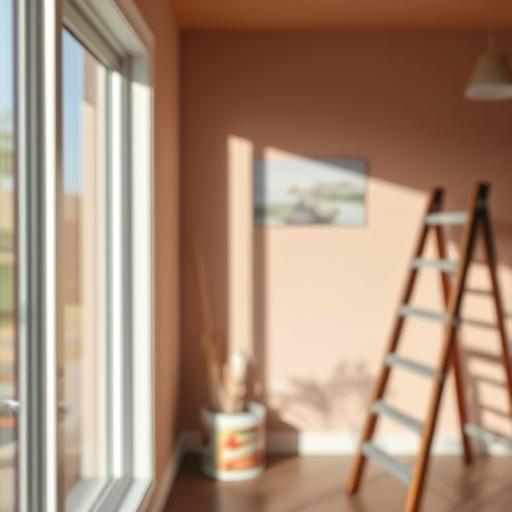The Art of the Gallery Wall: Why Exhibition Spaces Rely on Precision Work from Toronto Painters
Walking into a contemporary art gallery, your eyes are immediately drawn to the vibrant canvases, the intricate sculptures, and the bold installations that define the space. However, what often goes unnoticed is the silent partner in every successful exhibition: the wall itself. A flawless gallery wall does not just happen by accident; it requires the skilled hands of professional Toronto painters who understand that a backdrop can either elevate a masterpiece or distract from it. In the world of high-end art, the finish of the paint is just as critical as the lighting or the curation, setting the stage for a truly immersive experience that allows the art to speak for itself.
The relationship between the artist and the wall is a delicate one. When we visit a museum or a local gallery, we expect a sense of perfection. We want to feel like the art is floating in a space designed specifically for its existence. This sense of “perfection” is actually the result of intense labor and technical expertise. If there is a single drip of paint, a visible brush stroke, or an uneven patch of texture, the viewer’s eye will catch it. Once the viewer is distracted by the wall, the magic of the artwork is lost. This is why curators and gallery owners are so particular about who they hire to prep their spaces.
In a city like Toronto, where the art scene is booming and competition for attention is high, the quality of an exhibition space can make or break a show’s reputation. From the historic buildings in the Distillery District to the sleek, modern glass towers of the downtown core, every space presents its own set of challenges. Professional painters don’t just apply color; they prepare the “canvas” of the room so that every artist who hangs their work there can shine. It is a craft that requires patience, precision, and a deep understanding of how light interacts with different surfaces.
The Psychology of the White Cube
The concept of the “White Cube” has dominated art gallery design for decades. The idea is to create a neutral, sterile environment that removes any outside context, allowing the viewer to focus entirely on the art. But achieving a true “White Cube” is much harder than simply buying a bucket of white paint and rolling it on. There are thousands of shades of white, ranging from cool blues to warm yellows. Choosing the wrong one can completely change how a painting looks. For example, a warm white might make a contemporary abstract piece look muddy, while a cool white might make a classical portrait look clinical and cold.
Professional painters in Toronto spend a lot of time discussing these nuances with curators. They understand that the “white” in a gallery isn’t just a color; it is a tool for manipulation. It needs to be incredibly flat and non-reflective to prevent glare from heavy gallery lighting. If the paint has too much shine, the shadows from the frames or the texture of the canvas will create distracting reflections. Achieving that perfectly matte, velvet-like finish requires multiple coats and expert sanding between each layer to ensure the surface is as smooth as glass.
Furthermore, the “White Cube” must be consistent. In a large gallery with multiple rooms, the transition from one space to another needs to be seamless. If the paint batch varies even slightly, or if the application technique changes, the human eye will detect the shift. This consistency is why exhibition spaces rely on professionals who use high-quality equipment and have the discipline to follow a rigorous process. It is about creating a space that feels infinite and undisturbed, providing a sanctuary for the art and the audience alike.
Precision and the Technical Side of Exhibition Painting
When you look closely at a gallery wall, you shouldn’t see any evidence of the person who painted it. This is the ultimate goal of exhibition painting: invisibility. To achieve this, painters must master the art of “cutting in.” This refers to the process of painting the edges along the ceiling, floor, and corners without using tape. While DIY enthusiasts might rely on blue tape to get straight lines, a professional uses a steady hand and a high-quality brush to create a razor-sharp edge. This is especially important in galleries where the architecture itself is often minimalist and sharp.
Another technical challenge is dealing with the history of the walls. In a busy gallery, shows change every few weeks. This means thousands of nails are driven into the walls and then pulled out. Over time, a gallery wall can become a “Swiss cheese” of holes and patches. A professional painting crew spends hours, sometimes days, just on prep work. They fill every hole, sand it down, and then apply a primer that ensures the topcoat adheres perfectly. If the patching isn’t done correctly, you will see “ghosting”—the faint outline of where a hole used to be—once the lights hit the wall.
Precision also extends to the tools being used. Many high-end galleries prefer spray application over rollers for a truly uniform finish. Spraying requires a high level of skill to avoid “orange peel” texture or runs. It also requires extensive masking of floors, vents, and lighting tracks. When you hire experts like All Painting Toronto, you are paying for that level of detail. They know that in an art gallery, the “good enough” standard doesn’t exist. Everything must be perfect because the art demands it.
Color Theory and Beyond the Traditional White Wall
While the white cube is the standard, many contemporary exhibitions are moving toward bold, saturated colors to create specific moods. A dark, moody charcoal grey might be used for a photography exhibit to make the black-and-white prints pop. A deep, royal purple might be chosen for a historical show to evoke a sense of royalty and importance. When working with these dark colors, the stakes are even higher. Dark paint shows every single imperfection, from a tiny speck of dust to an uneven stroke of the roller.
This is where professional painters really show their value. Dark colors often require special primers and multiple coats to achieve full “opacity,” which is the paint’s ability to hide what is underneath. If the paint is applied too thinly, the wall will look streaky. If it is applied too thickly, it can sag. Professionals understand the chemistry of the paint they are using. They know how long to wait between coats and how the humidity in a Toronto summer might affect the drying time. This knowledge ensures that the final result is a rich, solid block of color that feels like a physical part of the room.
In these cases, the painter becomes a collaborator in the exhibition design. They might suggest a specific finish, like a “dead flat” matte, to ensure that the dark walls don’t reflect the spotlighting used on the art. By understanding color theory and the technical properties of the paint, they help the curator achieve the exact emotional impact they were looking for. Whether it is a calming sage green for a nature-themed show or a vibrant neon for a pop-art installation, the execution must be flawless to be effective.
The Importance of Durability in High-Traffic Spaces
Art galleries are surprisingly high-traffic environments. Between opening night parties with hundreds of guests and the daily flow of students, tourists, and collectors, the walls take a beating. People accidentally lean against them, bags scuff them, and children touch them. Furthermore, the process of installing and de-installing art is rough on the surfaces. Heavy crates are moved around, ladders are leaned against walls, and heavy sculptures are bolted into place. Because of this, the paint used in a gallery must be incredibly durable.
Professional painters use commercial-grade coatings that are designed to stand up to this kind of abuse. These paints are often “scrubbable,” meaning that scuffs and fingerprints can be wiped away with a damp cloth without removing the paint or leaving a shiny spot. This is a huge advantage for gallery managers who need to keep the space looking pristine between major repaints. High-quality paint also retains its color better over time, even when exposed to the powerful UV rays of gallery lighting or natural light from large windows.
For a business like All Painting Toronto, the goal is to provide a finish that lasts. They understand that a gallery cannot afford to close down for repairs every time a wall gets a small scratch. By using the right products and the right techniques from the start, they save the gallery time and money in the long run. It is an investment in the infrastructure of the art space, ensuring that the focus remains on the creativity on the walls rather than the maintenance of the building.
Lighting and the Interaction with Paint Finishes
Lighting is perhaps the most critical element in any art exhibition, and it has a direct relationship with the paint on the walls. Most galleries use adjustable track lighting with high-intensity bulbs to highlight specific pieces. This directional light is very unforgiving. It skims across the surface of the wall, highlighting every bump, ridge, or dip. If a painter has not sanded the walls properly, the lighting will reveal “lap marks”—the lines where one pass of the roller met the next.
Professional painters work closely with lighting designers to choose the right sheen. A “matte” or “flat” finish is the standard because it absorbs light rather than reflecting it. This creates a soft, even background that doesn’t compete with the art. However, in some modern spaces, a “satin” or “eggshell” finish might be used to give the walls a slight glow, making the room feel more alive. The key is knowing how the specific light fixtures in the gallery will react with the chosen paint. Professionals often do “mock-ups,” painting a small section of the wall and viewing it under the actual gallery lights before committing to the whole room.
This level of care is what separates a standard house painter from someone who specializes in exhibition spaces. It is about seeing the room through the eyes of the viewer. They consider the angle of the sun at different times of the day and how the artificial lights will be positioned. By controlling how light interacts with the wall, the painter helps create the “atmosphere” of the show, whether that is bright and airy or dark and intimate.
Conclusion: The Foundation of Every Great Exhibition
In the end, the art of the gallery wall is about respect. It is about respecting the artist’s vision, the curator’s hard work, and the viewer’s experience. While the painters may be the “unsung heroes” of the art world, their contribution is foundational. Without a perfectly prepped and painted space, even the most beautiful artwork can feel diminished. The precision, technical skill, and artistic understanding brought by professional painters ensure that the gallery remains a place of wonder and inspiration.
If you are a gallery owner, a curator, or even a homeowner looking to create your own professional-grade gallery wall, don’t settle for anything less than perfection. The walls are the canvas for your life and your art. For those in the Greater Toronto Area, reaching out to experts who understand the unique needs of exhibition spaces is the first step toward a successful project. We highly recommend visiting All Painting Toronto to see how their commitment to precision and quality can transform your space into a masterpiece of its own.



